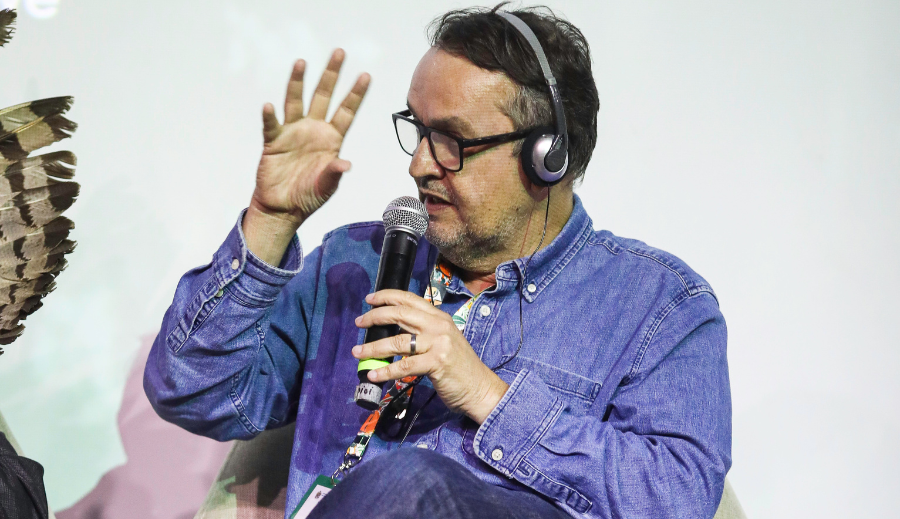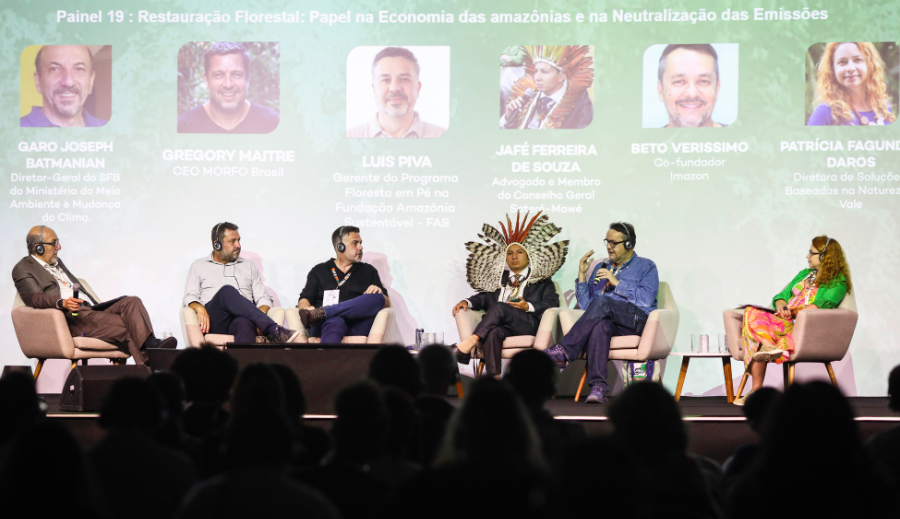Text by Mateus Miranda, edited by Carla Fischer
Photos: Philip Bishop
As an important tool in the Amazon economy and in neutralizing greenhouse gas emissions, forest restoration was the theme of a panel held this Thursday (7), during the second day of the II International Conference on the Amazon and New Economies.
"It's a new, pre-competitive sector. But I see it as an opportunity. We are at a time when we need unity so that everything can work out. The problem is systemic," said Gregory Maitre, CEO of Morfo Brasil, which uses technological innovations such as drones, artificial intelligence and ecosystem reproduction in the process.
Forest restoration has significant impacts, including offsetting greenhouse gas emissions, creating jobs, and strengthening a bioeconomy that values forest resources in a sustainable way, as opposed to deforestation. In this way, it promotes social, economic, and environmental benefits, with the active participation of local communities.
The journalism initiative Amazônia Vox is providing its first live, in-person coverage this week. With a team of twelve professionals, the main points and debates of the panels during the 2nd International Conference on the Amazon and New Economies will be highlighted.Follow the coverage here.

"Indigenous peoples have ancient knowledge of forestry, sustainability and balanced ecology. How can they be heard? Why invest in external alternatives? These points need to be integrated," comments Jafé Ferreira de Souza, lawyer and member of the Sateré-Mawé General Council, who also reinforced the importance of land demarcation as a way of guaranteeing a whole mosaic of rights.
This aspect was reinforced by Luis Piva, manager of the Floresta em Pé program at the Fundação Amazônia Sustentável. "We need to ensure the participation of indigenous and quilombola peoples. No element like this works without dealing with traditional populations. Looking at their point of view from their perspective. How this affects them," he pointed out.
According to Garo Joseph Batmanian, Director General of the Brazilian Forest Service (SFB), part of the Ministry of Environment and Climate Change, discussions are important, but actions are even more essential. “We need to start taking action. And in doing so, we must adopt a different approach: listening more than talking to better understand local needs and culture,” he said. For him, it is essential that solutions are faster. “If we wait for all the answers, it will take a long time, and the world could change. We need to take that risk.”
Landscape

Brazil has 500 million hectares. A little over 80 million of these are deforested areas and 320 million still remain in the country. In addition to the restoration process, for Beto Veríssimo, Co-founder of Imazon and Director of the Amazon Entrepreneurship Center, it is also necessary to care for both areas with balance and equivalence. "The more biodiversity, the healthier your forest will be. But first, we need to take the depleted forests out of intensive care, without abandoning them," he warned.
Potential
It is estimated that forest restoration could generate R$500 million in carbon. According to the Director of Nature-Based Solutions, Patrícia Fagundes Daros, this brings several benefits to forests. "It increases vegetation cover, improves soil quality and increases the number of species and biodiversity in the country," she explained.
A special coverage Amazônia Vox at the International Conference on the Amazon and New Economies is brought to you by Vale.




